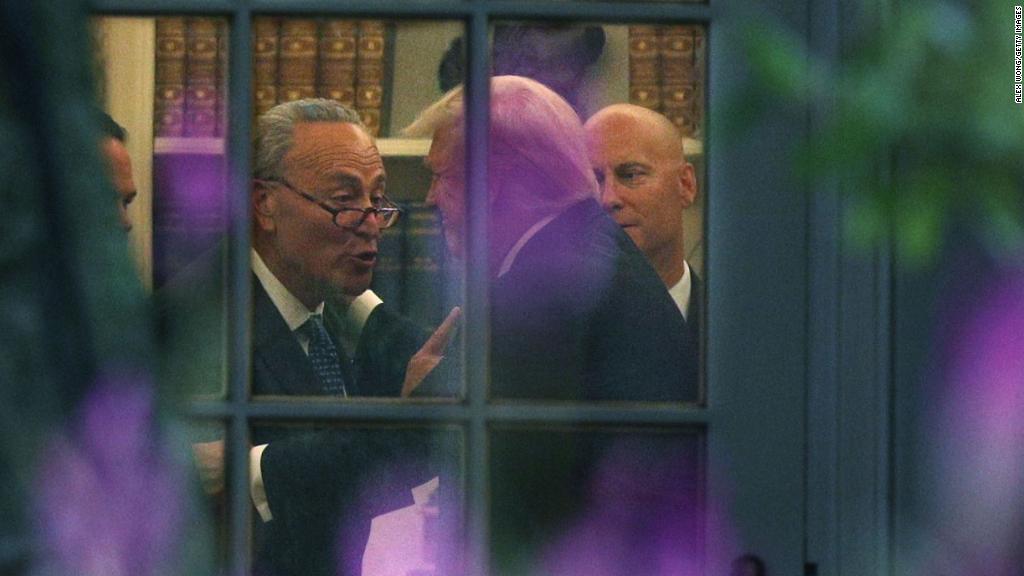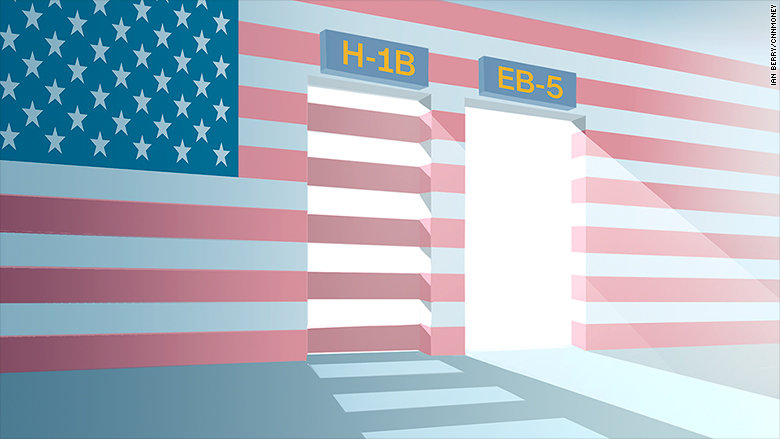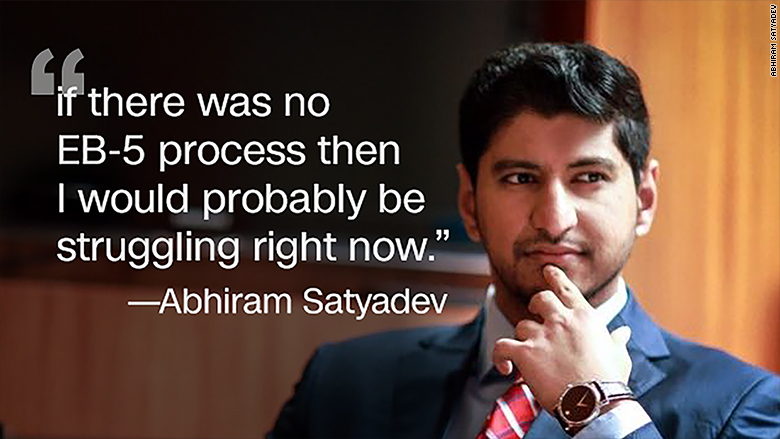
Facing a crackdown on their favorite visa to enter the United States, hundreds of wealthy Indians are turning to another program that fast tracks immigrants to a green card.
Applications from India for EB-5 visas -- which give immigrants a green card if they invest $500,000 and create 10 jobs in the United States -- have surged in recent months.
The US government issued 174 such visas to Indians in the year ended September 2017, an increase of about 17% over the previous year, according to State Department data.
Interest has taken off since then. In October and November, the United States received another 307 applications from India for what is often referred to as the "golden visa."
Indian demand for EB-5 visas has "really become explosive in the past 12 months," Neil Weinrib, an immigration lawyer based in New York, told CNNMoney.
Reacting to the H-1B crackdown
The spike comes as the US government makes it harder to get H-1B visas, which allow skilled foreign workers to be employed in the United States. More than 70% of H-1B visas have been awarded to Indians in recent years.
President Donald Trump has repeatedly criticized the program for flooding the United States with cheaper foreign workers and taking jobs away from Americans, particularly in the tech sector.
Changes to the program -- like greater scrutiny of applications and a possible shortening of the three-year visa period -- threaten big Indian outsourcing firms such as Tata Consultancy Services, Infosys (INFY) and Wipro (WIT), which hire and send thousand of tech workers to companies in Silicon Valley. Those companies are now dialing back H-1B applications and hiring more Americans.
The Trump administration is also looking to reverse a rule allowing spouses of H-1B holders to work in the United States, putting further pressure on the program.

"[There have] been a lot of changes with the H-1B visa program ... a lot of [Indians] are considering the EB-5," said Preeya Malik, co-founder of Dubai-based consultancy Step America.
Malik's co-founder, Shai Zamanian, said roughly one in four of Step America's current Indian clients have received or applied for the H-1B but want to apply for the EB-5.
The company has also seen a 200% increase in inquiries about EB-5 from prospective Indian clients in the last six months, he added.
"There is a general understanding that the doors of migration to the US are slowly closing," Zamanian said. "H-1B aside, because there's an understanding that if they don't get in now they might not get in next year, we are seeing an uptick."
'Buy American, Hire American'
The EB-5 program, with its investment threshold and emphasis on job creation, aligns with Trump's exhortation to "Buy American, Hire American."
"The current administration is certainly in favor of EB-5," said Andrew Graves, head of business development at the US Immigration Fund. "The government likes this type of immigrant -- sophisticated, wealthy and who are going to come in and add value to US society," he added.
The fund, which connects EB-5 visa applicants to US investment projects, has been expanding its India business with new offices in New Delhi and Mumbai. Graves expects the number of Indian applications at least to double every year for the next several years, overtaking countries like South Korea, Vietnam and Brazil.
Related: CEO of $20 million startup could lose his visa and his business
China remains the biggest market by far for the visa, but it has been losing its luster.
The country accounts for thousands of EB-5 applicants every year -- more than 75% of roughly 10,000 visas awarded -- but demand there is now slipping because the backlog of applications means Chinese investors now have to wait at least 10 years for a green card.
Applications from countries that account for more than 7% of the total EB-5 visas available are put on a waitlist.
"A severe slowdown in the China market has brought more EB-5 practitioners to India," said Brian Ostar, head of global operations at EB5 Capital, which matches investors with opportunities. The long wait times for other visas have made the $500,000 investment the "quickest and most affordable option for many Indians," he added.
Still, the program is controversial. Critics argue that too much of the money goes to wealthy urban areas. Companies aren't required to disclose much about how they spend the funds, which can lead to abuse and fraud. Some lawmakers say the program effectively sells citizenship to wealthy immigrants.
'This is the right time'
Abhiram Satyadev is one Indian who has taken the investment route. He moved to the United States in 2011 to study for a masters. After graduating in 2013, he wanted to settle in the country but felt the H-1B program was too restrictive.
So with help from his father -- an entrepreneur based in Bangalore -- he invested in a real estate project in Baltimore through EB5 Capital. He applied for an EB-5 visa in 2015, while working on an H-1B, and got his green card in 2017.

"Having an H-1B is not a solution, it's more like a band aid," Satyadev told CNNMoney. "If you want to stay here then eventually people will want to ... get a green card, and if they have the money, I think this is a good program."
Satyadev, 28, now works at a government-run water treatment plant called DC Water, a job he says he wasn't eligible for without a green card.
"I really wanted to stay here, if there was no EB-5 process then I would probably be struggling right now," he said.
His advice to others considering the program? Get in now.
"This is the right time," he said, pointing to calls by the Department of Homeland Security that the minimum investment threshold should be increased.
"You don't want to wait too long because policies can change anytime."
-- Edwin Thomas contributed to this report


